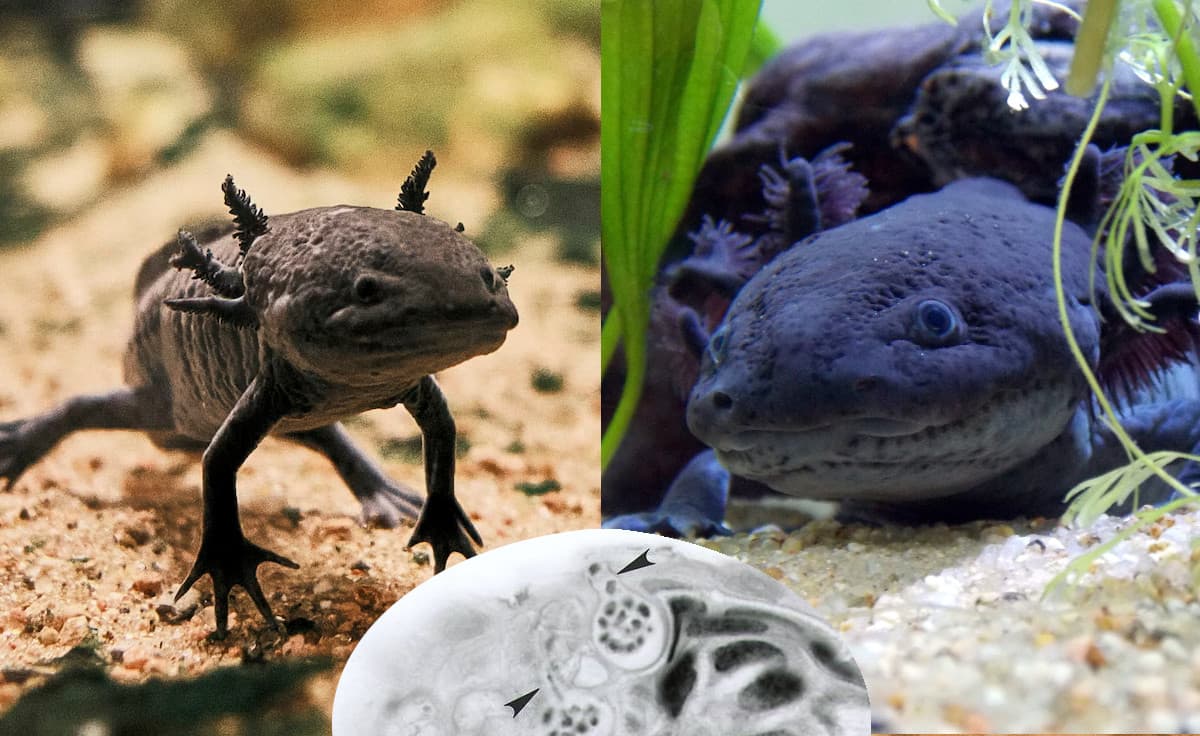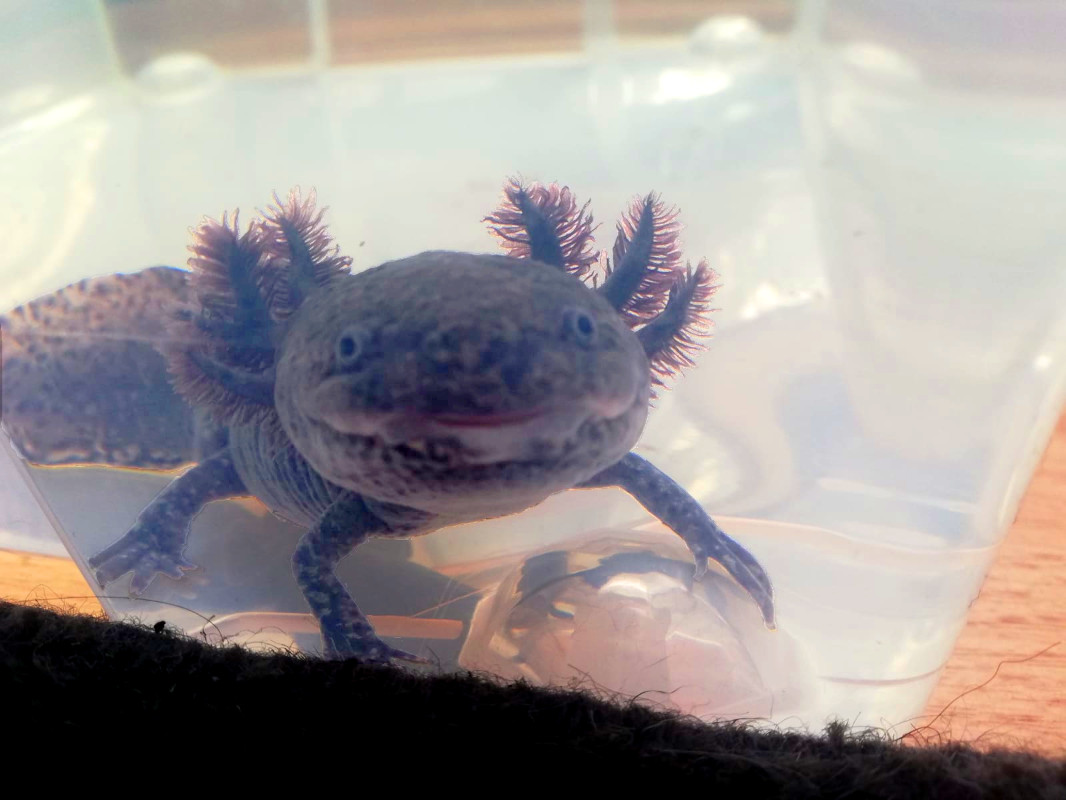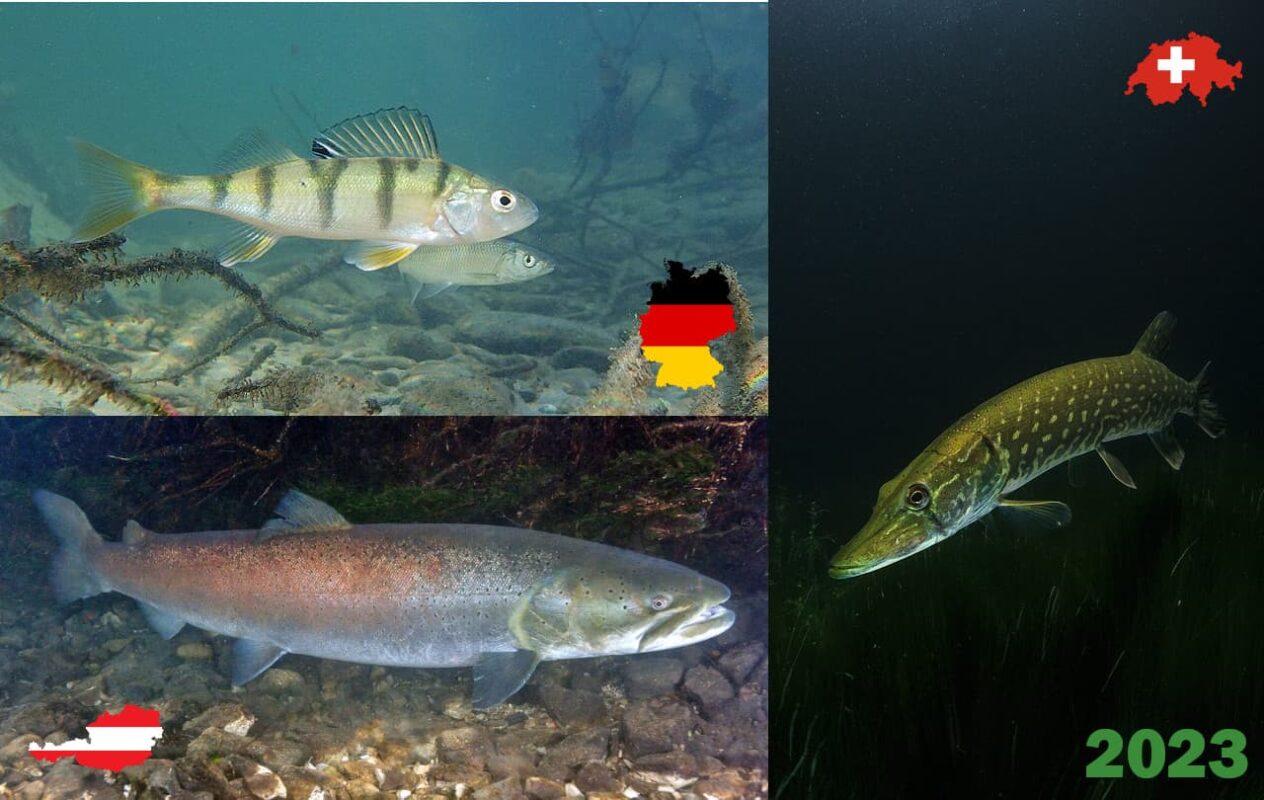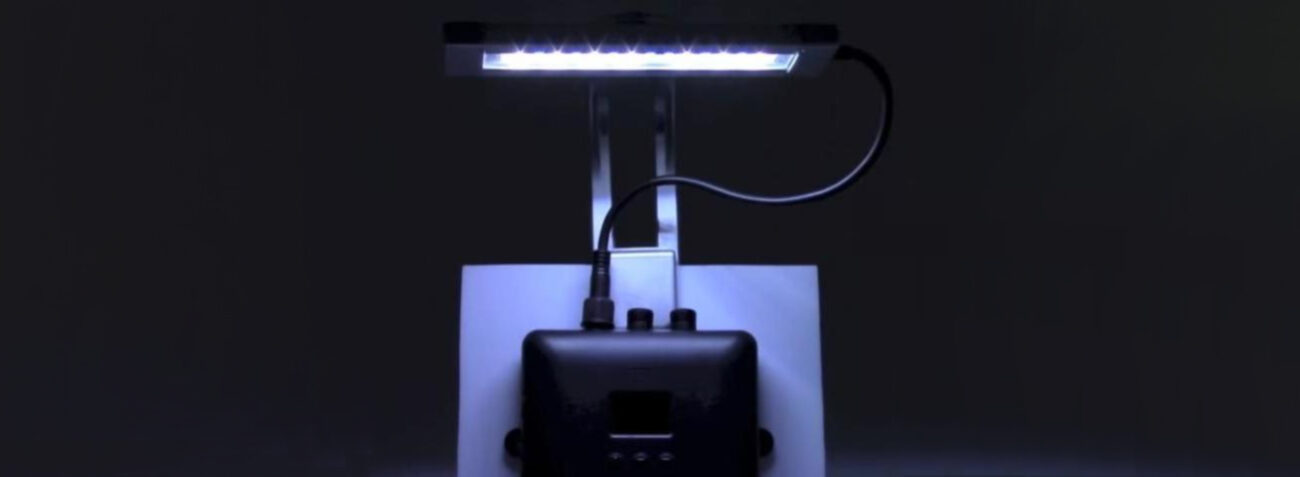In our post about the ‘fascinating water dragons’ axolotl, we already briefly mentioned the much-feared chytrid fungus, or ‘BD’ for short. Most people interested in axolotls have certainly heard of this dreaded disease – if they haven’t already had it in their aquarium. But what is this mysterious amphibian-killer fungus actually all about?
Where Does the Fungus Come From?
The chytrid fungus (Batrachochytrium dendrobatidis), also known colloquially as BD, is every amphibian keeper’s nightmare, but where does it actually come from?
BD was first detected in African frogs in the 1920s. It then spread very quickly to America, Asia and unfortunately also to Europe.
Since 1980, there has been talk of a veritable chytrid fungus epidemic — and rightly so. This is because the fungus not only threatens our domestic or zoo animals, but is also responsible for population declines in more than 500 amphibian species worldwide. And around 90 species have already been proven to be extinct due to the fungus!
The fungus, or rather its variants, the ‘salamander plague’ is now also raging in Europe, for example among fire salamanders. In the Netherlands, 96 per cent of the fire salamander population has died from ‘Batrachochytrium salamandrivorans’ (Q1).

In Germany, the fungus is expanding from the Zuid-Limburg region (Netherlands) and the Belgian Ardennes. As a result, areas in North Rhine-Westphalia are increasingly affected (currently mainly the North Eifel, South Eifel and Ruhr regions). There are also already affected areas in northern Bavaria and southern Bavaria.
Wherever the fungus occurs, this has catastrophic consequences for native wild amphibians, including the fire salamander, great crested newt, alpine newt, pond newt and smooth newt (Q2).
Suspected BD in Your Own Aquarium
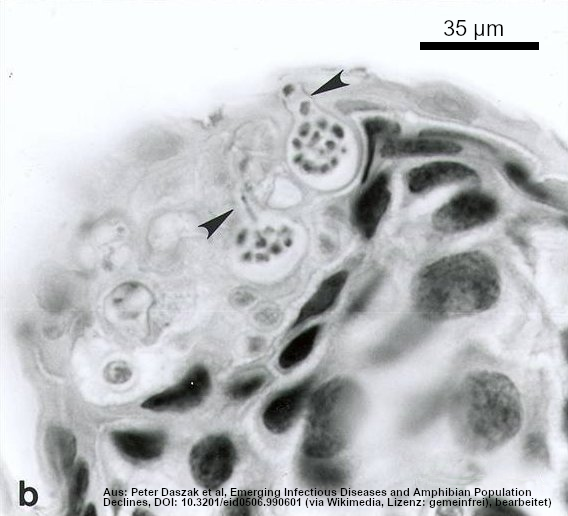
The BD fungus is even more widespread in aquariums than in the wild. As it does not affect fish, traditional pet shops do not test for possible infestations. As a result, the fungus spreads all too easily via animals, plants and furnishings — it can even settle on neighbouring aquarium items via flying fungal spores!
In this way, you can unknowingly introduce the dreaded axolotl disease into your aquarium. But your own hands can also become a problem: As the chytrid fungus is often already present in the soil etc. outdoors, reaching into the aquarium with unnoticed infected hands can be enough to get the fungus onto the animals.
Unfortunately, an infestation is often only visible to the naked eye when it is already extremely advanced. And even then it needs a trained eye!
However, There Are Indicators That the Animals Are Infected:
- For example, the fungus can manifest itself as brown or black pigmentation in the mouth, feet, cloaca, belly or tail area as well as massive keratinisation of the flanks.
- Some infected animals develop apathy, movement disorders, convulsions and secondary bacterial or other fungal infections of the skin.
If you suspect that your animals may be infected, you should take a swab immediately and send it to a laboratory for analysis. This involves swabbing the mouth, the underside of the tail, between the toes of all four feet, the cloaca and the belly with a sterile swab — often a difficult task, as the animals understandably do not like to be lifted out of the water.
It is best to get a second person to help you swab them. The swab is placed in the corresponding tube with medium and immediately sent to a laboratory (e.g. Q3), which tests the sample for BD.
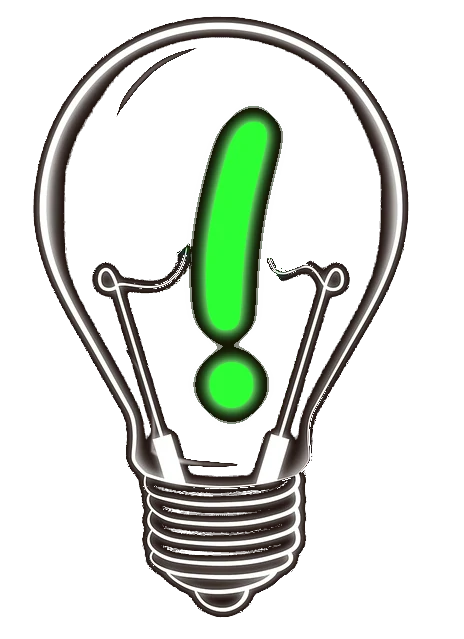
Did You Know?
BD can occur completely unnoticed! Unfortunately, it is becoming increasingly common and widespread. It can even be introduced via the air. It is therefore best to carry out an annual test on your animals. To keep the costs down, you can take a collective swab from several animals and send it in. If BD is present in one animal, all the animals in the aquarium are affected anyway and must be treated.
By the way: If you discover an infestation in your animals: Don’t hold it against yourself! Almost every axolotl keeper, no matter how professional they are, has encountered the fungus at some point. The important thing is that you react quickly and comprehensively!
Infection Detected: What Now?
The worst-case scenario has happened and your axolotls have been found to be infected with the chytrid fungus? Here’s what to do:
First of all, treatment should begin immediately to spare your pets unnecessary suffering. Because BD sometimes kills ‘only’ gradually – but it kills!
1. Off to the Quarantine Box
Therefore, take your “water dragons” out of the aquarium immediately and place each one individually in a clean quarantine box.
Large plastic tubs made of food-grade plastic are used as quarantine boxes. The boxes can be flat, but should have a lid so that the lotls cannot jump out.
IMPORTANT: DO NOT put any gravel, furnishings or anything from the aquarium in the box. Only put ONE Axolotl and clear tap water in each box. Change the water twice a day. You should thoroughly wipe out the box and rinse it with clear water. Please do NOT use any cleaning agents!
It is best to get two boxes per lot. This way you can always simply move your little darlings into a prepared box and then have time to clean the used box.
IMPORTANT: Remember that it is more difficult to keep the water temperature cool enough in the quarantine boxes: If you do not have a cool room in which the water temperature of the quarantine boxes remains sufficiently cool between water changes, you can work with cooling elements that you place under the boxes (placing a towel between the cooling element and the box floor) and replace regularly. Your flow-through water chiller is ‘contaminated’ — you must therefore NEVER use it for the quarantine boxes!
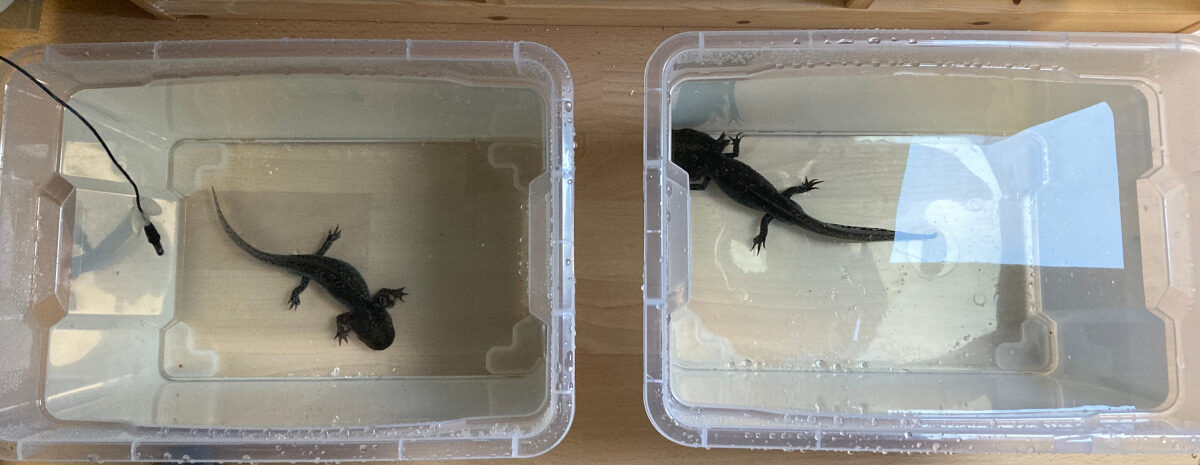
2. Amphibian Experienced Vet
Next, you need to speak to your amphibian vet. In some regions, vets specialising in this field are few and far between, and you may even have to drive further to find one. However, you won’t always have to take the animal to the vet. Often, the laboratory report should be sufficient for the vet to prescribe the necessary medication.
An antimycotic such as itraconazole will be prescribed against the chytrid fungus (Q4). For treatment with this the animals are placed in water to which the medication has been added for some time. You therefore need another — rather small — box for these medicinal baths. The vet with amphibian experience will explain to you which medication you should use and, nost important, exactly how it is done.
If you have any problems or need practical tips, you can also ask experienced axolotl keepers or breeders, for example in this (German) Facebook group
.
3. The Big Cleaning
Your animals are in their box quarantine and are being treated — now it’s time to disinfect the entire aquarium. Unfortunately, it is not enough to treat just the axolotl. The fungus is very persistent and is present in all parts of your aquarium landscape (and beyond, e.g. also on curtains etc.)! Therefore, re-infection would occur immediately if your “dragons” were to return to the still-infested aquarium.

ATTENTION: Protect our wildlife!
IMPORTANT: Never, NEVER, NEVER (!) pour out infected aquarium water ‘just like that’ — not into the sewage system and certainly not into the garden or the environment. This can lead to the extinction of entire amphibian populations in your neighbourhood!
Mix all water to be disposed of with a sufficient amount of chlorine cleaner to disinfect it. Only then can you dispose of it (through the sink, shower or toilet) via the sewage system.
To disinfect all parts of your aquarium, use a disinfectant that is effective against the BD fungus, like Virkon-S. Virkon-S can be bought as granules. For use, it is mixed with water to form an effective disinfectant solution. The solution is clearly pink in colour and can be used as long as the colour is strong. If the colour fades, the solution has also lost its disinfecting effect.
i. The Aquarium
The aquarium must be completely emptied. Then thoroughly disinfect every nook and cranny with Virkon-S solution according to the instructions for use. As Virkon-S itself is also toxic to amphibians, you must rinse the aquarium thoroughly after disinfection.
ii. The Plants
All plants from the infected aquarium must be disinfected if you want to reintroduce them. To do this, immerse them for approx. 1-2 minutes in a disinfectant bath, e.g. with Virkon-S in a 1% solution. If you also had mossballs in the aquarium, you must squeeze them out several times in the disinfectant bath like a rinsing sponge. Leave them in the bath for approx. 3-4 minutes longer than the other plants (i.e. 5 minutes in total).
Afterwards rinse the plants well with water and squeeze the moss balls again and again (and again) in clear water until no disinfectant residue remains. Because this could harm the axolotls later in the newly disinfected aquarium.
After this procedure, the plants must be soaked in clear water for a week before you can put them in the newly set up, clean aquarium.

Our Advice
Experience has shown that not all plants survive the disinfection procedure. If you buy new plants now, remember that plants from the normal aquarium trade are very often one of the most common sources of BD! So before you bring the drama straight back into your home with new plants, buy the new plants from guaranteed BD-free (tested!) stocks or order pre-treated or in vitro (sterile) grown plants.
iii. Pump/Filter/Chiller
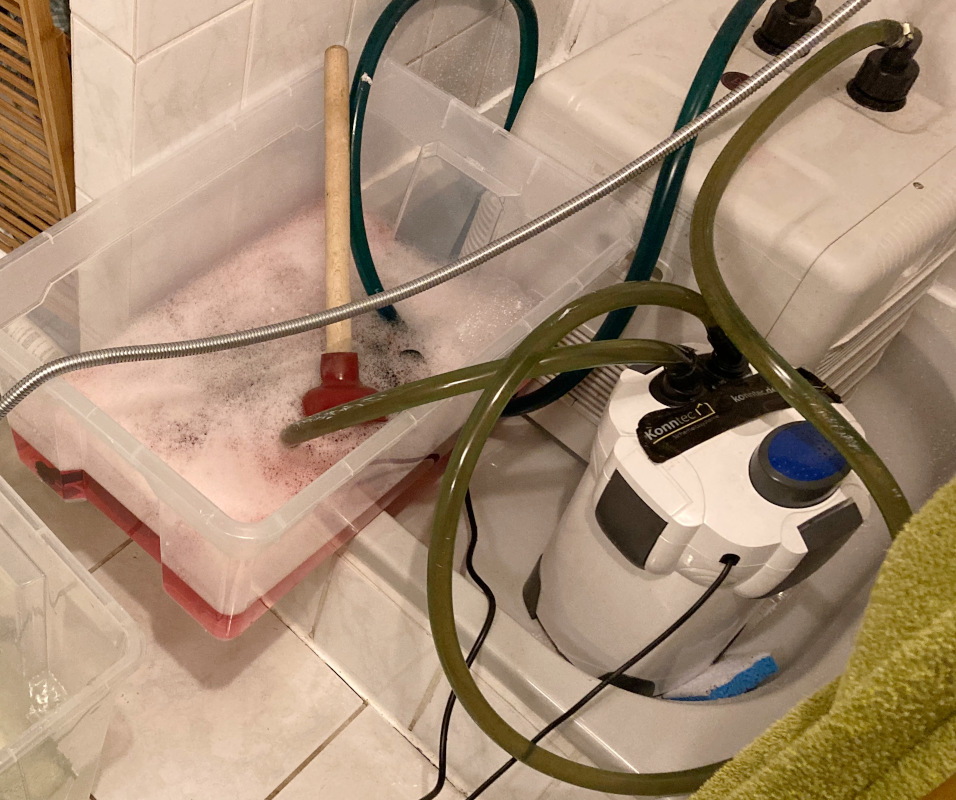
All filter materials such as fleece or mats should generally always be disposed of (treat with chlorine cleaner and/or pack well so that no germs are released into the environment) and new ones purchased. The fungus can become so well established there that even disinfectant baths are not sufficiently effective. However you may keep the ceramic rings as they can be disinfected in the oven (see below).
Disinfecting the inside of the appliance is more complex: The best way to do this is to build a circulation system with the (emptied and pre-cleaned) pump, the flow-through chiller and a bucket filled with disinfectant.
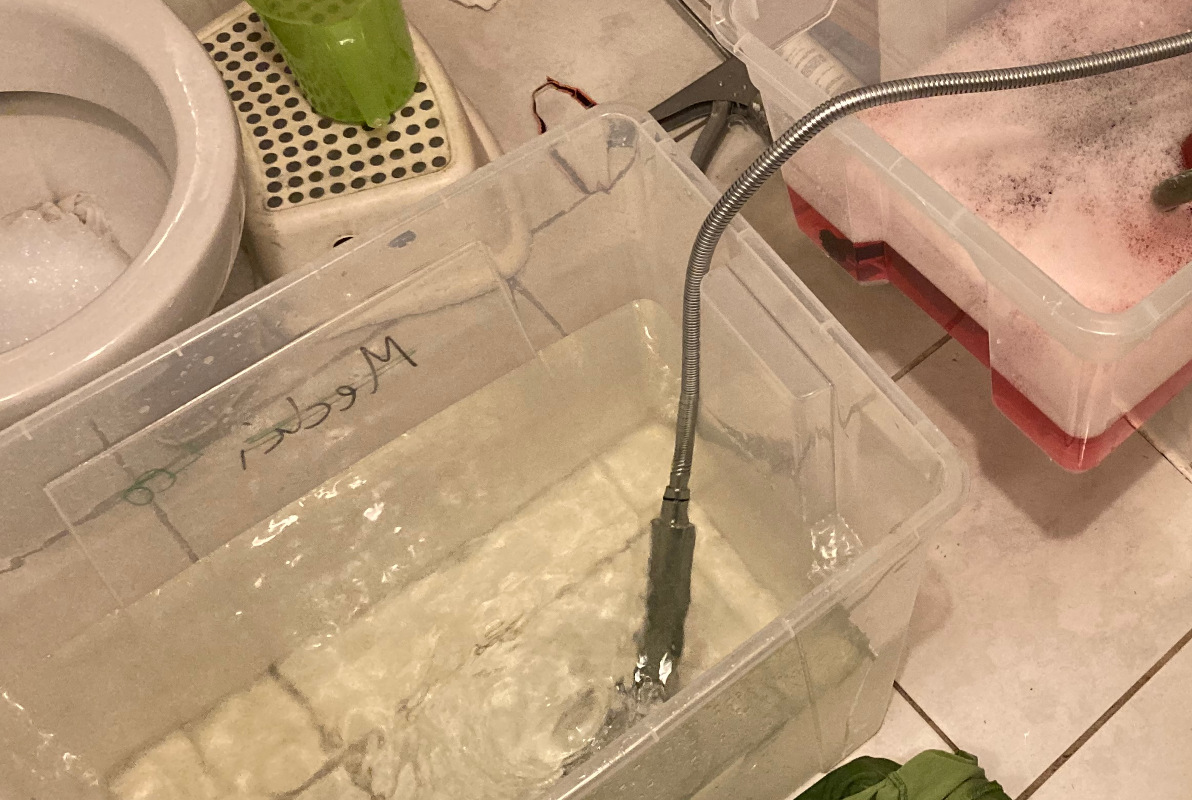
To do this, both the suction hose of the pump and the outlet hose of the flow chiller are hung in the bucket, which contains a sufficiently large amount of the fresh disinfectant solution.
Now allow the pump to pump the Virkon-S through the pump and cooler in a circuit for at least 30 minutes, but preferably for 1-2 hours. The disinfectant is then disposed of or used to disinfect other items. The entire system must now be rinsed clean again for several hours (preferably overnight) with clear water constantly flowing in. A trick can also help here:

Hint
If you have an easily controllable shower, you can use it as an “automatic refill system” (see private photos above):
To do this, fill a bucket or larger box with water and hang the pump intake hose in it. Drain the drain hose of the cooler into the shower tray or toilet (you will have to throw the hose away later anyway). While the pump sucks the water out of the bucket and through the entire system into the shower drain, you place the shower head in the water bucket and turn the shower on so that the bucket is always topped up with exactly the same amount of water as your pump sucks out of the bucket. This way you don’t have to keep topping up the clear water reservoir all the time by hand…
After disinfection, you must completely replace all hoses. Both the fungal spores and the disinfectant are too firmly embedded in the material and could harm your animals. This also applies to the air pump hoses of possibly existing bubble stones (though bubblers are not recommended for axolotl anyway): As the air stones themselves are very difficult to disinfect reliably, you should also replace these.
IMPORTANT
Also remember to disinfect all surfaces — including the shower curtain, curtains or carpet near your aquarium. This is because fungal spores can also sit in these. With every movement or step, the fungal spores can be stirred up, allowing the fungus to re-enter the aquarium.
iiii. Gravel & Other Equipment
There is good news here: you can continue to use the gravel or Axogravel after you have thoroughly heat-disinfected it. The same applies to other heat-resistant furnishings such as ceramic caves or similar. To do this, place all the gravel in layers no thicker than 1 cm and the caves etc. on trays in the oven at 200 °C circulating air for 1.5 hours to thermally disinfect them.
Non-heat-resistant furnishings such as caves made of synthetic resin etc. are disinfected in the Virkon-S bath in a similar way to the plants. However, they should remain there longer than the plants: At least 10 minutes is recommended, then rinse very well with clear water or leave to soak for longer. Clay materials that cannot be baked off due to their size should remain in the disinfection bath for a good 30 minutes due to their pores and then be placed in clear water for a week (!).
Everything Fresh = Restart!
You’ve done everything and the aquarium is newly set up? Then your animals can’t go back into the aquarium straight away. As an aquarist, you know that a fresh system needs to cycle before you put in the animals!
This means that your aquarium now also has to cycle again like a completely new system. And that can take time. It can take a really long time!
This is because you should keep the temperature low while cycling (not quite as cool as with axolotls, but significantly cooler than at room temperature). If you allow the system to run at higher temperatures, it is possible that a cold-tolerant equilibrium will not be established. The nitrogen cycle could then collapse again abruptly when the aquarium temperature is lowered to introduce the animals — with corresponding dangers for your animals.
And as starting aids are also forbidden in the axolotl tank, the only thing that helps is ‘wait and measure’…
But don’t worry about your animals during this time: they usually tolerate the box quarantine very well — it’s even like going to the spa for them. It’s just a lot of work for you.
Prevention: What Can You Do to Prevent it From Happening?
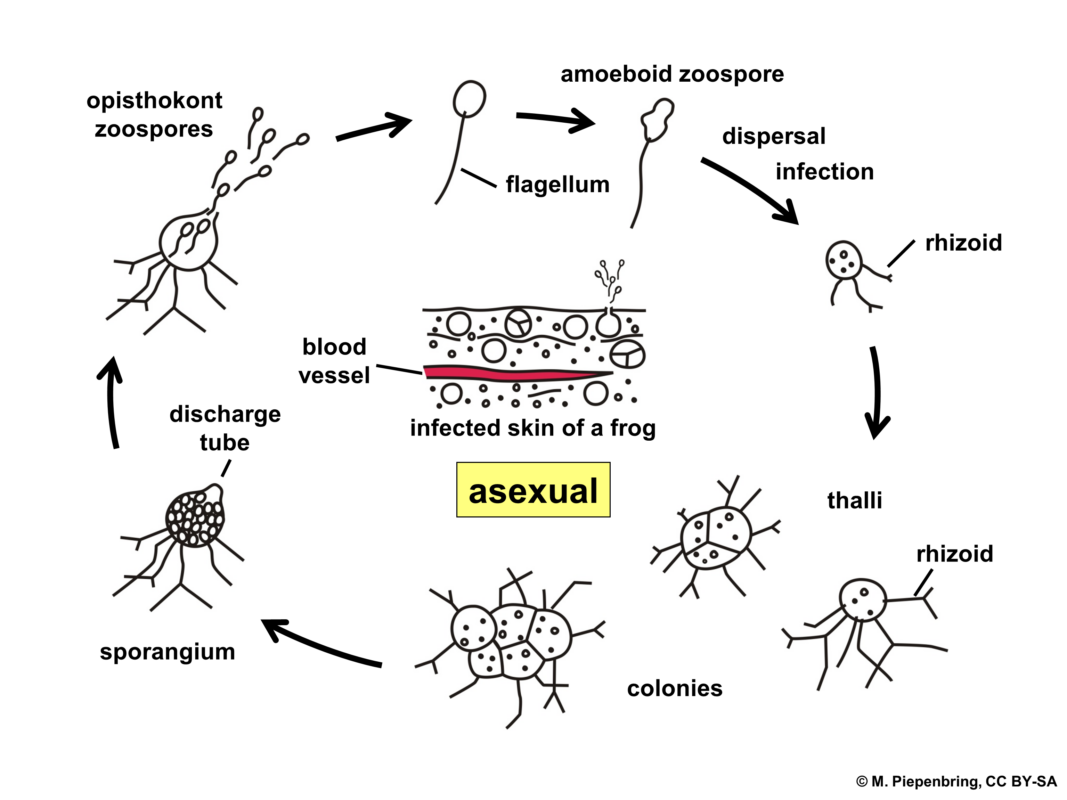
This makes the question of how to prevent re-infection all the more important.
Unfortunately, this is not so easy: the fungus has very persistent spores that can survive in water for up to 24 hours (Q5). This means that anyone can easily become a carrier. But there are still tips to avoid infection:
- Anything that goes into the aquarium, e.g. plants or food animals, should either be disinfected or bought from verified BD-free stock.
- If you plan to add more axolotls to your aquarium, ALWAYS put them in a quarantine tank for a few weeks first and test them yourself — don’t rely on older test results shown to you.
- And finally: Don’t let strangers get into the aquarium and always wear gloves when working on the aquarium yourself, or wash/disinfect your hands thoroughly beforehand.
Have fun with your healthy axolotls!
Sources
Q2: https://www.lanuv.nrw.de/natur/artenschutz/amphibienkrankheiten
Q3: https://www.exomed.de/home/Information?id=46
Q4: https://www.elb-molche.de/bd-behandlung
Q5: https://de.wikipedia.org/wiki/Chytridpilz
Top image: Emaciated axolotl in poor condition, photo: Nathan Guzman via Unsplash, sick and healthy axolotl, photo: LaDame Bucolique via Pixabay. Microscopic image of BD sporangia, photo: Peter Daszak et al. via Wikimedia

